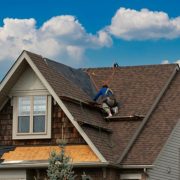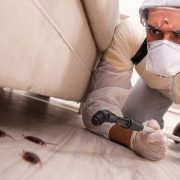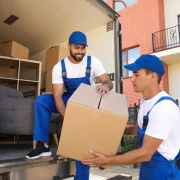Waterproofing toilet floor areas is one of those essential home maintenance tasks that most people overlook until it’s too late. I’ve spoken to countless homeowners who’ve learnt this lesson the hard way, watching their bathroom floors rot away, their ceilings below stained with water damage, and their wallets considerably lighter after emergency repairs. The truth is, your toilet floor takes more punishment than almost any other surface in your home, and without proper waterproofing, you’re sitting on a ticking time bomb.
Why Your Toilet Floor Needs Protection
Water doesn’t just appear on your bathroom floor from obvious leaks. Condensation, splashes, overflow incidents, and the simple act of showering all contribute to moisture accumulation. Over time, this water seeps through grout lines, around toilet bases, and into the structural layers beneath your tiles. In Singapore, where humidity levels regularly exceed 80 per cent, the Building and Construction Authority recommends comprehensive waterproofing for all wet areas, including toilets. Their guidelines specify that “waterproofing works shall be carried out to prevent water seepage to adjacent areas and the floor below.”
The consequences of neglecting toilet floor waterproofing extend beyond visible damage. Mould growth poses genuine health risks, particularly for children and those with respiratory conditions. Structural timber can rot, concrete can degrade, and the entire integrity of your flooring system becomes compromised.
Signs Your Toilet Floor Needs Waterproofing
You don’t always need to wait for a crisis to know there’s a problem. Watch for these warning signs:
- Discolouration or staining on the ceiling directly below your toilet
- A persistent musty odour that doesn’t shift even after cleaning
- Loose or lifting floor tiles around the toilet base
- Grout that’s crumbling or has developed cracks
- Water stains appearing on walls adjacent to the toilet area
- Soft or spongy spots when you press on the floor
The Waterproofing Process Explained
Waterproofing a toilet floor isn’t a quick fix you can rush through on a Saturday afternoon. The process requires proper preparation and patience. First, all existing floor coverings must be removed, right down to the structural base. Any damaged substrate needs repair before waterproofing begins.
The waterproofing membrane itself comes in various forms: liquid-applied membranes, sheet membranes, or cementitious coatings. Each has its place, though liquid membranes have gained popularity for their ability to create seamless barriers around awkward shapes and penetrations. Singapore’s standards require waterproofing membranes to extend at least 150mm up the wall from the floor surface, creating a basin effect that contains any water that might accumulate.
Critical Areas That Demand Extra Attention
When waterproofing toilet floor spaces, certain zones need particular care. The junction between floor and wall represents the most vulnerable point in any waterproofing system. This corner must receive reinforcement, typically through additional membrane layers or specialized corner strips.
Around the toilet base itself, the waterproofing must be meticulously detailed. Any penetration through the floor, whether for waste pipes or water supply lines, creates a potential weak point. These areas require careful sealing and often benefit from additional collar systems that provide redundant protection.
Floor wastes and drainage points deserve equal attention. The membrane must integrate properly with these fixtures, creating a watertight seal that won’t fail under pressure. In Singapore’s tropical climate, where heavy rainfall can stress drainage systems, this integration becomes even more critical.
Choosing the Right Materials
Not all waterproofing products perform equally. Look for materials that carry relevant certifications and have proven track records in humid environments. The membrane should be flexible enough to accommodate minor structural movement, yet robust enough to resist punctures during tile installation.
Singapore’s waterproofing standards specify minimum performance requirements, including water resistance under pressure and compatibility with various substrate types. Products meeting these standards will typically carry appropriate certification marks.
Common Mistakes to Avoid
I’ve seen too many botched waterproofing jobs that end up costing more than if the work had been done properly initially. Rushing the curing process ranks among the most frequent errors. Waterproofing membranes need adequate time to cure before tiles are installed. Shortcut this stage, and you compromise the entire system.
Inadequate surface preparation also causes failures. The substrate must be clean, dry, and structurally sound. Applying waterproofing over dusty, damp, or damaged surfaces guarantees eventual problems. Similarly, applying membranes too thinly or missing spots creates gaps where water will inevitably find its way through.
The Long-Term Investment
Quality waterproofing represents genuine value rather than an expense. A properly waterproofed toilet floor can last decades without requiring attention, whilst a failed system demands expensive remedial work that typically costs three to four times more than doing it right initially.
Your home’s structural integrity depends on keeping water where it belongs. Every day that passes with inadequate waterproofing compounds the risk of significant damage. Whether you’re renovating an existing toilet or installing a new one, prioritizing proper waterproofing toilet floor protection remains the single most important decision you’ll make for that space.





Comments